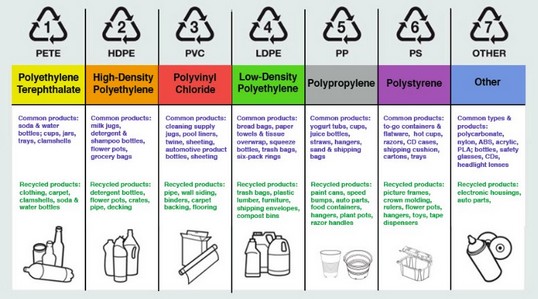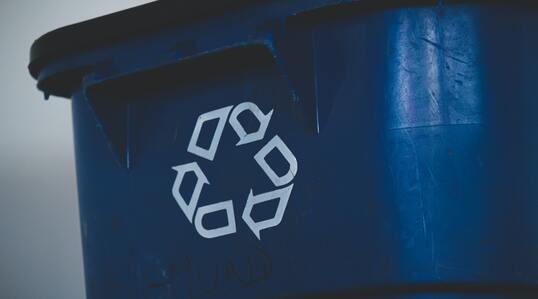What to Do With Non-Recyclable Plastic
Introduction
Plastic pollution has become a significant ecological issue in the United Arab Emirates in recent years. According to CEO Middle East, residents use 11 billion plastic bags and 1.5 million MT of bottles, packaging, and other plastic products every year, which is four times the global average.
Fortunately, many businesses and state bodies have stepped in proactively to minimize and end plastic pollution through proper disposal and recycling. The only bad news is that not all plastics are created equally. In other words, you must do much more than chucking a disposable plastic cup in a recycling bin because not all plastic products can be recycled.
Today, many residents simply don’t know what to do with non-recyclable plastic. Therefore, in this post, we’ll provide a simple guide to help readers understand recyclable vs. non-recyclable plastic. With our guide, you will be able to distinguish between the two. We’ll also share how to properly dispose of bad plastic from your home or business.
Recyclable Plastic vs. Non-Recyclable Plastic

One of the simplest and easiest ways to determine whether a plastic item is recyclable or not is by learning about Resin Identification Code (RIC). All plastic products contain a number between one and seven at the bottom, describing the type of polymer the plastic resin was made from:
- Polyethylene Terephthalat
- High-Density Polyethylene
- Polyvinyl Chloride
- Low-Density Polyethylene
- Polypropylene
- Polystyrene
- Other
The Relationship Between Resin Identification Codes and Recycling
Plastic products with RIC numbers one and two, such as beverage bottles, jars, trays, and detergent bottles, can be recycled easily. Plastic products with numbers between three and six can be recycled as well. However, the process is much more difficult and costly. As a result, many recycling companies avoid recycling polystyrene and polypropylene products.
Finally, products with the number seven are nearly impossible to recycle. Examples include nylon, acrylic, glasses, and lenses. Today, nearly all types of non-recyclable plastics end up in landfills, where they start to degrade and leach harmful chemicals. A huge chunk of the waste also ends up in the oceans, harming marine life in the process.
Why Recycling Companies Don’t Recycle Non-Recyclable Plastics
Unfortunately, most recycling companies reject non-recyclable items due to the excess labor required to separate different types of plastic. Some may also reject loads of recyclable items simply due to contamination. For example, plastic bags used to dispose of garbage can get stuck in recycling machines and disrupt the entire process.
Hence, many recycling companies urge residents and businesses to follow proper disposal measures to ensure they don’t contribute to recycling inefficiencies. RECAPP recommends that consumers minimize plastic products, especially difficult-to-recycle or non-recyclable ones, and replace them with products that have RIC less than 3.
What to Do With Non-Recyclable Plastic
Limiting your consumption is the best way to deal with non-recyclable plastic products. Fortunately, there are many ways to do this. For example, you can switch to tote bags for shopping and avoid using plastic bags. Moreover, you can opt for products with alternative packaging or buy in bulk to limit frequent purchases.
Secondly, most plastic containers and products are incredibly versatile and can be used for several other purposes apart from their primary ones to increase their lifecycle. For instance, you can use disposable food packaging to store other food items in your fridge. Plastic is an excellent material for hundreds of DIY projects, including bird feeders, planters, baskets, and more.
Unfortunately, there comes a time when non-recyclable plastic disposal is no longer an option but a necessity due to storage issues or excessive usage. Instead of tossing all your waste in a single bag, you can do your due diligence to separate the waste according to the RIC rating. Doing so will ease some of the burdens of the shoulders of recycling companies.
Moreover, this practice could also ensure that non-recyclable plastics don’t end up in landfills or the ocean. For example, a waste facility in Sharjah operated by Veolia burns waste to produce electricity. By segregating waste according to its ease of recycling, you can ensure only non-recyclable products become fuel for plants like these.
Conclusion

Plastic pollution is one of the most important environmental issues worldwide. As a result, many forward-thinking countries, such as the UAE, are actively looking for ways to minimize the environmental degradation caused by this useful but incredibly dangerous material.
One of the most important initiatives taken is supporting recycling services like RECAPP. Since our founding in 2020, we have become one of the biggest recycling services in the United Arab Emirates, with over hundreds of tons of recyclables safely collected from over 50,000 registered users’ households.
